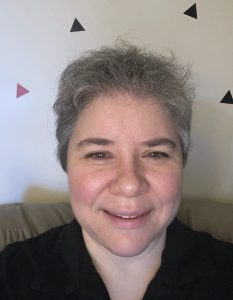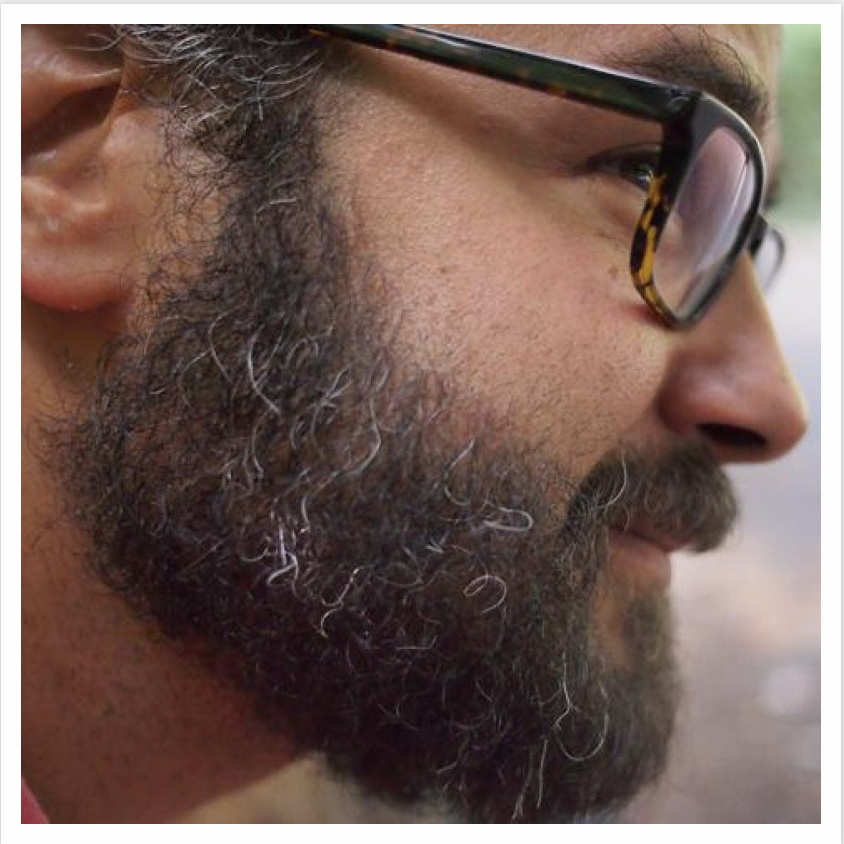Making Art, Learning Math
by Sarah Lonberg-Lew & Mark Trushkowsky
In December of 2021, we (Sarah Lonberg-Lew and Mark Trushkowsky) embarked on a project to create a piece of art to submit to the Desmos Global Art Contest. Here is a still image of our submission:
Click here to see it in all its animated glory. (And try clicking on some of the stationary objects for a little bonus.)
Desmos is an online platform for learning, teaching, exploring, and playing with math. For the art contest, we created our masterpiece using the graphing calculator. That means that every point, curve, movement, and color is created by numbers and equations.
Our adventure started when Sarah discovered how to animate a small line.
We invite you to play with this line for yourself. Visit Making Art, Learning Math. Don’t worry if you don’t understand the math — that’s not what this is about. (Mark says, “I definitely didn’t, and still I was able to play and learn!”) You can play and explore by changing numbers and seeing what happens as a way to learn what is going on. What do you see?
For us, the line was evocative of a fish and so we tried to figure out how to add a head. The shape we added was bigger than we intended, but we thought it looked like a stingray and liked it, and thus MANTA was born!
Each day we worked and played, we also spent time reflecting on what was driving and sustaining our interest. We were making art together and that meant building a collaborative vision. It was a rich math learning experience, where we would pose problems determined by elements we were inspired to create — a spiral snail shell, multicolored urchin section, a sine wave clam shell lip, etc. Often we found ourselves in the position of not knowing the math we needed. Sometimes we tried something without really knowing what we were doing and we liked how it looked and we kept it. Sometimes we tried something and it was close to what we wanted but not quite right. In those cases, we experimented with changing different parts of our equations to see what effects the changes had. We leaned into the verb “noodling” to describe this process for ourselves.
We thought a lot about how students and teachers might learn from making art with a graphing calculator.
Starting with an equation and experimenting with how changing elements of the equation impacts what you are looking at makes connections between abstract expressions and images. Experimenting with our equations and watching the effects in real time, making adjustments to tweak the results – these were rich reasoning experiences that had us thinking about numbers, relationships, direction, distances, angles, slopes, and more. Sometimes we found things we loved completely by accident. When we had an idea of what we wanted, it motivated us to learn and practice the skills we needed to create it. Some of those skills were pretty high level, but others were accessible to a lot of adult ed teachers and students. We asked questions like:
- How can I find a point that is between these two points but closer to one than the other?
- By how much do I need to change the coordinates to nudge this object over? Is it a matter of tenths or of thousandths?
- How many vertices do I need to add to my polygon to smooth out the shape I’m going for?
- Should we turn the x and y axes on for a minute to see where we are?
Questions like these had us using our mathematical skills in an authentic and integrated way and pursuing learning new skills with excitement. We explored and answered these questions, not because it was an assignment for class, but to fulfill our artistic vision.
Want to know what it feels like to create art with math? Here is a graph we set up for you and your students to play with. Try making your own adjustments or adding or removing elements.
What can you do with your mathematical and artistic power?
BTW, Here are the Global Desmos Math Art Contest 2021 Finalists. You may notice that we were not one of the top ten winners in the 19+ age category. We feel very confident we came in 11th place. 😀

Sarah Lonberg-Lew has been teaching and tutoring math in one form or another since college. She has worked with students ranging in age from 7 to 70, but currently focuses on adult basic education and high school equivalency. Sarah’s work with the SABES Mathematics and Adult Numeracy Curriculum & Instruction PD Center at TERC includes developing and facilitating trainings and assisting programs with curriculum development. She is the treasurer for the Adult Numeracy Network.

Mark enjoys doing math problems that take weeks, family sing-a-longs and reading late into the night. At 16, he believed the next revolution would be waged through poetry. Now he believes it is adult basic education. But he still likes poetry. Mark has worked in adult literacy and HSE since 2001. He is a founding member of the NYC Community of Adult Math Instructors (CAMI). He was born and raised in Brooklyn. He currently lives happily ever after in Minnesota with his partner Sarah, their daughter Liv, 4 chickens and a dog named French Fry. Follow him on Twitter (@mtrushkowsky)
